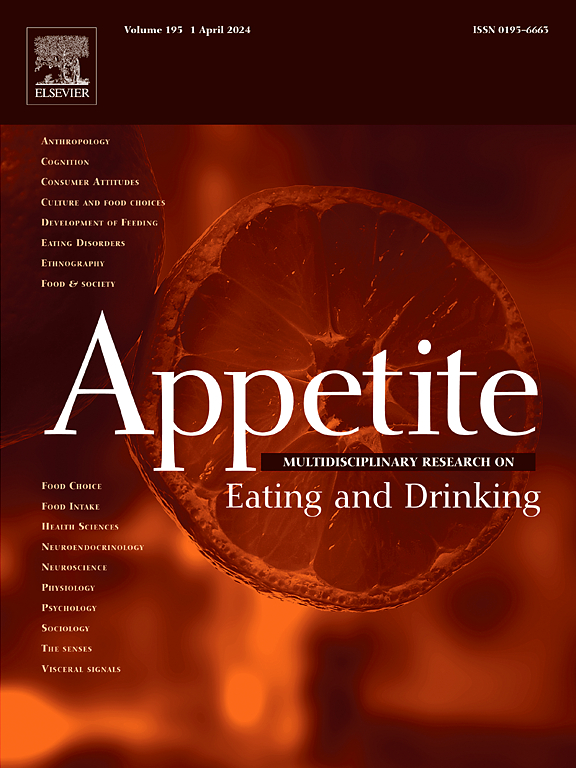健康、外表还是时尚?寿司在意大利流行背后的驱动力。
IF 4.6
2区 医学
Q1 BEHAVIORAL SCIENCES
引用次数: 0
摘要
尽管意大利消费者历来不愿吃生鱼,但寿司在意大利正取得前所未有的成功。重要的是要了解这种偏好的重大转变背后的原因,因为它可能为采用全球产品和/或饮食的过程树立榜样。为此,我们调查了驱动寿司消费的食物动机(即健康、情绪、便利、感官吸引力、天然含量、价格、体重控制、熟悉度和道德关注),也包括个人因素(即社会规范、新食物恐惧症、可追溯性),涉及798名全国代表性消费者样本。数据分析显示,社会规范是寿司消费背后的主要驱动因素,而感官吸引力、价格和新事物恐惧症则降低了寿司消费的频率。可追溯性与自然和道德问题有关,并阻碍了寿司的消费频率。这些结果可能为即将出台的旨在促进新型、健康和可持续食品消费的营销战略和政策铺平道路。本文章由计算机程序翻译,如有差异,请以英文原文为准。
Healthiness, appearance, or fashion? The drivers behind the sushi popularity in Italy
Italy is witnessing an unprecedented success for sushi even if Italian consumers have a historical reluctance towards eating raw fish. It is important to understand what is behind this major shift in preferences, since it may set an example for the process of adoption of global products and/or diets. To this aim, we investigated which food motives drive sushi consumption (i.e., health, mood, convenience, sensory appeal, natural content, price, weight control, familiarity, and ethical concern), including also individual factors (i.e., social norms, food neophobia, traceability) on a national representative sample of 798 consumers. Data analysis yielded that social norms were the main drivers behind sushi consumption, while sensory appeal, price and neophobia reduced sushi frequency consumption. Traceability was associated with naturalness, and ethical concern, and hindered sushi consumption frequency. These results may pave the way for forthcoming marketing strategies and policies aimed at promoting the consumption of novel, healthy and sustainable food.
求助全文
通过发布文献求助,成功后即可免费获取论文全文。
去求助
来源期刊

Appetite
医学-行为科学
CiteScore
9.10
自引率
11.10%
发文量
566
审稿时长
13.4 weeks
期刊介绍:
Appetite is an international research journal specializing in cultural, social, psychological, sensory and physiological influences on the selection and intake of foods and drinks. It covers normal and disordered eating and drinking and welcomes studies of both human and non-human animal behaviour toward food. Appetite publishes research reports, reviews and commentaries. Thematic special issues appear regularly. From time to time the journal carries abstracts from professional meetings. Submissions to Appetite are expected to be based primarily on observations directly related to the selection and intake of foods and drinks; papers that are primarily focused on topics such as nutrition or obesity will not be considered unless they specifically make a novel scientific contribution to the understanding of appetite in line with the journal's aims and scope.
 求助内容:
求助内容: 应助结果提醒方式:
应助结果提醒方式:


